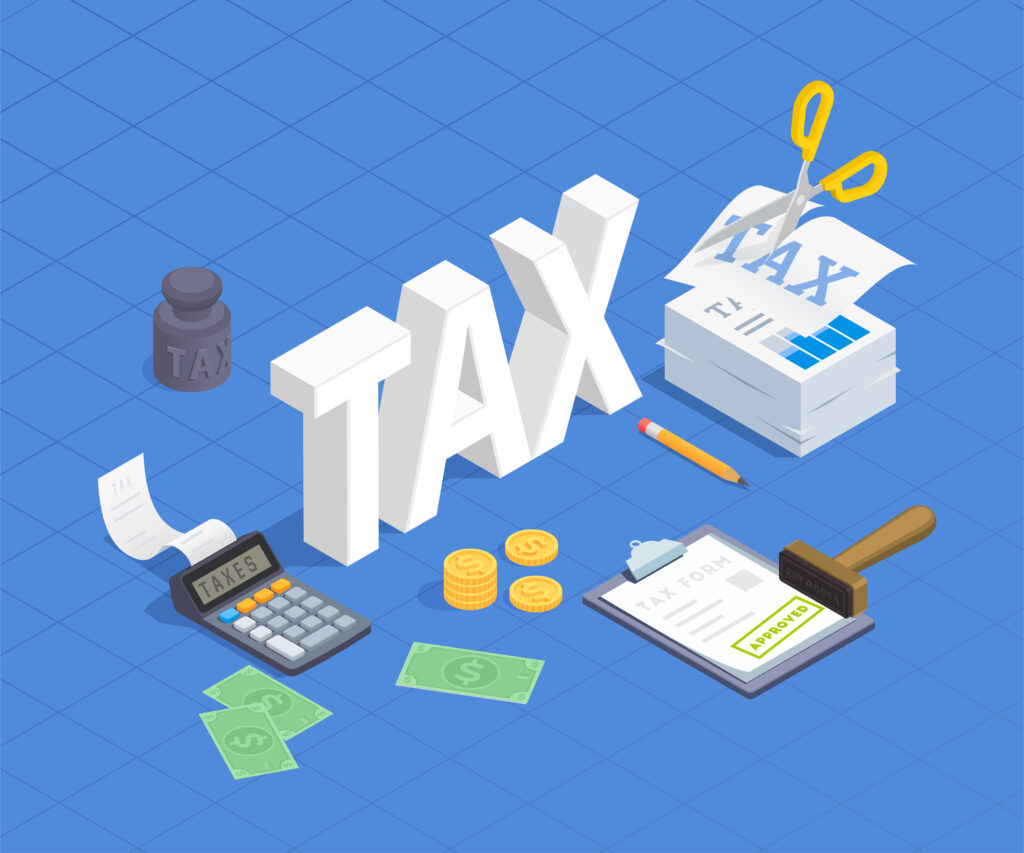Many people want a stable retirement. Taxes frequently be overlooked among other issues. However, retirement tax preparation is crucial to maintaining savings and optimizing income. Retirees may achieve financial freedom and a comfortable living by using tax reduction tactics. This post will teach you seven simple techniques to cut retirement taxes and enhance your finances.Financial security is crucial in retirement. Minimizing taxes at this time might help you save money and retire comfortably. Strategically managing your tax responsibilities may preserve your investments, enhance your retirement income, and prevent future financial problems.
Retirement tax preparation opens financial doors and gives piece of mind. Reduce your tax burden to keep more of your hard-earned money for living costs, leisure, vacation, or leaving a legacy.
Without assistance, retirement taxes may be complicated. Staying educated and exploring basic but effective tax-reduction measures is essential due to complex tax laws and shifting rules. You may comfortably begin your retirement journey by taking proactive efforts to enhance your financial well-being.
We’ll discuss seven simple retirement tax cuts in the following sections. These practical and realistic solutions can help you make educated choices, maximize tax savings, and retire comfortably. Let’s study these techniques and reduce retirement plan taxes.

Maximize Retirement Account Contributions
Maximize tax-advantaged retirement account contributions to reduce retirement taxes. 401(k)s and IRAs help lower your taxes and guarantee your financial future. Understand the benefits and use smart contribution techniques to maximize these accounts.
Utilize tax-advantaged retirement plans like 401(k)s and regular IRAs. Pre-tax donations to these accounts reduce your taxable income. Thus, your annual tax burden falls, letting you keep more of your hard-earned money.
These accounts grow tax-deferred. Investment gains and dividends are taxed only when you withdraw them in retirement. Tax-deferred growth may help your retirement funds increase.
Take advantage of employer-matched 401(k) contributions. Employer matching are free retirement savings. Maximize the company match to enhance your contributions without cost.
Consider these techniques to optimize contributions within limits:
- Budget for retirement savings: Cut spending to save more. Prioritizing retirement contributions helps you save enough.
- Automatically deposit paychecks into retirement accounts. This strategy automates savings, making it simpler to reach retirement objectives.
- Take advantage of retirement accounts’ catch-up contributions if you’re 50 or older. These extra contributions may improve retirement savings and lower taxed income.
- Consider a Roth option: Roth accounts, like Roth 401(k)s and Roth IRAs, provide tax-free withdrawals in retirement. Contributions are made using after-tax earnings. This may diversify and simplify retirement income and tax management.
Catch-Up Donations
Catch-up contributions help 50-year-olds boost their retirement savings. Beyond the restrictions, these contributions may assist close the savings gap and reduce taxes. Catch-up contributions boost retirement accounts:
Explain catch-up contributions and eligibility.
Catch-up contributions are for near-retirees. They let 50-year-olds add to their retirement savings. As retirement approaches, people have less time to invest and amass cash.
Discuss how catch-up contributions lower taxable income.
Catch-up contributions increase retirement savings and provide tax advantages. Contributing more to your retirement accounts lowers your taxable income. This decrease in taxable income may reduce your tax rate, enabling you to keep more of your profits.
Guide retirement account catch-up contributions.
These steps might maximize catch-up contributions:
- Understand your retirement account’s maximum catch-up contribution restrictions. Monitor these limitations.
- Assess your finances: Determine how much you can afford to give as catch-up contributions. Contribute according on your retirement objectives.
- Increase retirement account contributions to take advantage of catch-up contributions. Adjust to the higher limit by gradually increasing contributions.
- Automatic contributions streamline savings. This ensures catch-up payments are paid regularly, helping you meet your savings objectives.
Ask a financial counselor or tax expert about catch-up contribution guidelines. They can tailor advice to your financial position and maximize retirement savings.
YOU MAY ALSO LIKE: Top 9 Reasons Why People Become Broke in Retirement
Roth conversions
Converting to Roth accounts has long-term tax benefits. First, Roth accounts provide tax diversification by mixing standard and Roth funds. Changing tax rules and income levels benefit from this flexibility. With both kinds of accounts, people may strategically remove cash from either account to maximize tax savings.
RMD-free Roth IRAs are another benefit. Traditional IRAs and 401(k)s demand RMDs at 72 years old. Roth accounts are RMD-free. This allows investors to grow their assets tax-free indefinitely, increasing wealth accumulation and estate planning.
Consider numerous variables before converting to Roth. First, people must evaluate their existing and projected tax rates. Roth conversions might help retirees pay taxes at a reduced rate if they expect to be in a higher tax bracket. If their tax band is far higher than they estimate in retirement, a conversion may not be helpful.
Also consider the retirement timeframe. Roth accounts tax-free growth increases over time. The conversion’s immediate tax expense and long-term tax benefits must be considered.
Consider your long-term financial objectives before converting to Roth. Consider liquidity, estate planning, and government benefits. Consult a financial counselor or tax specialist to understand Roth conversions and determine their appropriateness for specific circumstances.
Tax-Effective Withdrawal Strategies
Maximizing retirement income requires tax-efficient exit techniques. Structure your withdrawals to minimize taxes and increase after-tax income. Let’s discuss planned withdrawal techniques, tax efficiency methods, and examples and situations to assist readers comprehend tax-efficient withdrawals.
Retirement taxable income management requires appropriate withdrawal planning. You may accidentally end yourself in a higher tax bracket, resulting in more taxes. A well-planned withdrawal strategy may save taxes and extend your retirement funds.
Tax deductions, credits, and exemptions are possible with proper withdrawal planning. It lets you use tax-efficient investments and maximize income treatment. With a good withdrawal plan, you may maintain your capital and retire comfortably.
The “bucket” and tax bracket procedures are utilized for tax-efficient withdrawals. The “bucket” concept divides retirement funds by time horizon. Short-term buckets retain liquid assets for urgent costs, while mid-term and long-term buckets hold investments for medium- and long-term requirements. You may reduce taxes and assure funding for certain needs by drawing from the right bucket at various times.
Strategically withdrawing cash keeps tax rates low. Optimize your tax status by balancing withdrawals from regular IRAs, Roth IRAs, and taxable investment accounts. Deductions, credits, exemptions, Social Security income, capital gains, and qualifying dividends may be considered.
An example illustrates these tactics. Let’s imagine you’re in a lower tax band early in retirement but expect to rise owing to RMDs or other income sources. To take advantage of the reduced tax rate, withdraw from taxable or Roth accounts early. This lets you postpone tax-exempt withdrawals from typical retirement funds until you’re in a higher tax rate.
Use HSAs
HSAs provide tax savings and medical savings. HSAs provide tax-efficient healthcare savings and retirement security with their triple tax benefit.
HSAs are unique because of their triple tax benefit. First, pre-tax HSA payments reduce your taxable income. You may retain more of your hard-earned money with this instant tax advantage.
Second, HSA investments and interest grow tax-free. Your HSA money may grow tax-free, unlike savings accounts. Your HSA balance may grow faster tax-free, giving more savings for future medical bills.
HSA withdrawals trigger the third part of the triple tax benefit. Medical costs including deductibles, copayments, medications, and some treatments are tax-free. This tax-free function helps stretch your healthcare expenditures and reduce medical bills.
Notably, high-deductible health plans (HDHPs) with higher deductibles are required to qualify for HSAs. In 2023 (at the time of writing), individuals may contribute $3,650 and families $7,300 to HSAs. A $1,000 catch-up payment is allowed for 55-year-olds. Of course, contribution restrictions may vary, so remain informed.
Maximize HSA contributions throughout your working years to establish a large medical cost retirement balance. HSA withdrawals for medical costs are tax-free, giving you peace of mind and financial stability.
HSAs provide retirement flexibility. HSAs are not use-it-or-lose-it like FSAs. You may build a large healthcare nest egg by carrying over unused HSA savings from year to year. This flexibility preserves your funds for when you need them.
Consider RMDs
Retirement planning requires intelligent RMD management. RMDs are the minimal withdrawals from tax-advantaged retirement accounts like regular IRAs and 401(k)s after a particular age. Understanding RMDs, including tax consequences and possible fines for non-compliance, and implementing ways to manage them are crucial.
RMDs ensure retirement funds are progressively depleted and taxed. RMDs must be started at 72 years old, except for those who reached 70 1/2 before 2020. To avoid penalties, RMDs must be taken before December 31st.
RMDs make typical retirement funds taxable in the year of withdrawal. Increased taxable income may put people in higher tax brackets and raise their tax burden. Note that RMD violations or underpayment may result in severe fines, but you can easily prevent this by complying on time.
As RMDs approach, make sure to examine and alter investment allocation. Individuals might invest to guarantee retirement account liquidity by calculating projected RMD amounts. This method meets RMD criteria without selling assets at adverse periods.
Combining retirement accounts simplifies RMD computations and disbursements. Consolidating accounts may simplify account management.

Professional Advice and Knowledge
Professional advice and tax law knowledge are essential to maximize retirement tax savings. Tax and financial advisors may provide specialized guidance and insights. Staying informed about tax changes helps people make smart retirement plan changes.
Retirement and tax optimization need professional help. Tax and financial consultants specialize in tax legislation, retirement funds, and financial planning. They assist people assess their finances, set objectives, and optimize tax benefits. Using their experience, people may find tax-saving possibilities, avoid typical errors, and ensure their retirement plans meet their long-term financial goals.
Retirement planning requires tax law awareness. Knowing tax law changes that may affect retirement strategy is crucial. Tax rates, contribution restrictions, deductions, and other rules affect retirement savings and tax obligations. Staying informed lets people adjust their strategies and take advantage of new tax-saving options.
People may use numerous methods to keep informed. Tax rules and regulations may be learned via trusted sources such tax publications, financial news, and government websites. These sites provide retirement tax planning advice and tax law updates.
Financial institutions, professional groups, and tax organizations provide seminars, workshops, and webinars that teach retirement planning tax-saving tactics. Industry professionals share their knowledge at these events, helping attendees keep current on tax legislation.
Tax experts and retirement planners are suggested. These experts know tax rules and can provide specific advice. Their knowledge helps retirees choose the best tax options.
Online forums, discussion boards, and social media groups on retirement planning and tax efficiency may provide offer insights and enable people to share their experiences.
Finally, keeping abreast of legislative changes and tax developments is essential. Following credible news sources and being aware of future changes might help people improve their retirement plans and maximize tax savings.














